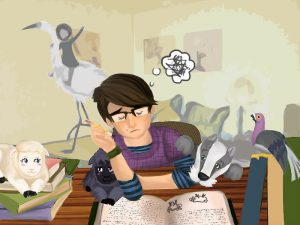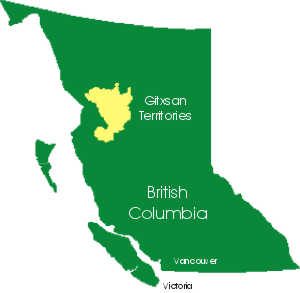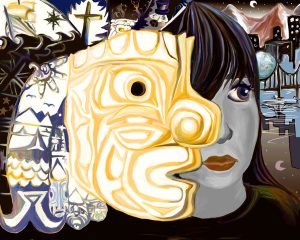 I wish that my story could be happier, but one of my most important values is sincerity, and to tell my story truthfully it has to begin sadly.
I wish that my story could be happier, but one of my most important values is sincerity, and to tell my story truthfully it has to begin sadly.
Home stopped being a ‘place’ on the day that my mother passed away. I was five years old, months away from entering the first grade, when my father took my brothers and me aside and said, “Mommy is not coming home.”
Looking back, for the next seven years after that, home was the wonderful feeling that I got when I was pretending to be somewhere else with my twin brother. We called it “The Game.” In “The Game” we had the power to do absolutely anything. We created alter-egos as the demigod siblings Sar-Sar (that was me) and Teru (Max) Tamtan. We had a pet koala named Poponicus and we lived in the place where anything could happen. In reality we moved from apartment to house, to larger house to smaller house, and went through a series of stepmothers. My father worked himself into illness, partially because his notion of self-identity was as a breadwinner, but also because his notion of home was mostly from decadent home cooked meals.
When my twin brother and I were twelve, my father told us to stop playing “The Game” and he played us “The Logical Song,” which is an actual song by the band Supertramp. If you’ve never heard the song before, it tells the listener about the experience of growing up. Max took it seriously and immediately became incredibly somber, and for all intents and purposes morphed into an adult. That Halloween, he was forced to go with me, and not wanting to dress in a costume, he dressed as a business man. People thought that he was Harry Potter, so it was not as awkward as it could have been. Meanwhile I did what I had always done when darkness fell upon my life: I soared deeper into my imagination. Max and I never played together again.
Then out of nowhere, my father began to pretend. Another world was born with farmers, lambs, badgers, wolves, mice, and pigeons at its center. I played the farmer’s daughter, the lambs, and the pigeons, and my father played the badgers, the mice, and the wolves. Home was coming back from school and making stories while cooking meals for my father.
Unfortunately, years into the story, the logical song found its way in. Sometimes I wasn’t the farmer’s daughter. I was “Dullard Daughter” who could never do anything right and whose job was to appease her father, and he was “Footha”, the tyrant authoritarian parent. I never was a dullard though. In reality I had gotten into university and the time spent making stories with him, and cooking increasingly elaborate meals for him was eating into time for my school work. Even worse, I had never been allowed to spend time making friends. When I asked to stop playing, Footha came to life, and by that time I was in my early twenties.
I could not call on Max because he strayed from the dysfunctionality by quitting university and getting job that took up most of his time. I could not call on my other brother, Benny – who had left my family as soon as he was old enough to.
I had to escape.
As death seems to be a large factor of change in my life, serendipitously my grandmother passed away, and my father decided that he had to move to Vancouver Island to be closer to my grandfather. I had to continue my education, so I stayed behind in Vancouver.
After that my idea of home changed completely. I got my first boyfriend at age 24. I took time off from school to start a business. I went travelling. I FINALLY EXPERIENCED REALITY UNSKEWED BY CONSTANT IMAGINATION!
Home became my boyfriend’s laugh, my kitten’s purr, warm slippers, and prospect of future opportunities.
Now, I type here on this little island, with my fiancé nearby, planning to reassemble a relationship with my father through story, planning to begin my own family through adoption.
I don’t like to play pretend any more. Real life is much better.
(Values: Family, sincerity, the pursuit of reality, utilizing opportunity)
I’d tell you why I seek the truth, and why I try not to lie, but that is another story.
Works Cited:
Keller, Sarah. Studying. Drawing, Vancouver, BC, Canada, 2012.
Keller, Sarah. The Badger And The Lamb. Drawing, Vancouver BC, Canada, 2012.
Supertramp, “Logical song.” Online Video Clip. Youtube. alberto meza, September 27, 2016.

 After a few hours, the owner of the property arrived at the cabin and welcomed the travelers to his retreat. The snowbirds unpacked their bags and got cozy as night fell. Let us say that the names of the couples were Fred and Abby, Josh and Lucy, Garth and Gail, and Louis and Daphne. The owner of the property was called
After a few hours, the owner of the property arrived at the cabin and welcomed the travelers to his retreat. The snowbirds unpacked their bags and got cozy as night fell. Let us say that the names of the couples were Fred and Abby, Josh and Lucy, Garth and Gail, and Louis and Daphne. The owner of the property was called 
 I’m in my last semester of a history degree which has taken me a very long eight years to complete. In that time I’ve also completed a certification in cosmetology (hair design), and I’ve gotten various marine certifications to start a water taxi and diving business which my partner and I have run from Ruxton Island in the Gulf Islands for three summers so far. Let’s just say that I wasn’t interested in a desk job when I started my degree, and it’s only now that I’ve realized that not all arts degrees lead to desk jobs. My hobbies include graphic design, comic book illustration, creative writing, and crochet. —- Ironically those are all stationary activities that take place at desks or in chairs. (The person in the self portrait is me, by the way…. I’m not the pigeon.)
I’m in my last semester of a history degree which has taken me a very long eight years to complete. In that time I’ve also completed a certification in cosmetology (hair design), and I’ve gotten various marine certifications to start a water taxi and diving business which my partner and I have run from Ruxton Island in the Gulf Islands for three summers so far. Let’s just say that I wasn’t interested in a desk job when I started my degree, and it’s only now that I’ve realized that not all arts degrees lead to desk jobs. My hobbies include graphic design, comic book illustration, creative writing, and crochet. —- Ironically those are all stationary activities that take place at desks or in chairs. (The person in the self portrait is me, by the way…. I’m not the pigeon.)